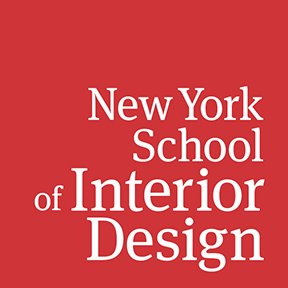Different Generations, Same Drive
Age Diversity Makes NYSID’s BFA Program Stronger
Monica Seroiczkowski ’20 (BFA) and Cielo Cortes ’21 (BFA)
Monica Seroiczkowski and Cielo Cortes, two BFA students at different stages of life, discuss their journeys to NYSID, and what they’ve found at the College.
When we sat down with Seroiczkowski and Cortes, they were ideating their theses, juggling jobs and school work, winning design contests, and going for their dreams. When the lockdown in response to COVID-19 changed reality as we know it, we decided to go forward with the histories of these two women, because their tenacity and creativity are exactly what the interior design industry will need as the world recovers from the pandemic.
Monica Seroiczkowski ’20 (BFA)
Monica Seroiczkowski: Juggled School and Work to Forge Her Path
Time management has been essential to Monica Seroiczkowski’s success at NYSID. Not only did she use her subway and bus commute as a study hall, she has also worked two jobs in order to make her education financially possible. “It’s been totally worth it,” she says. She happens to have loved her jobs, as a NYSID library worker sorting materials in the school’s Mario Buatta Materials Atelier, and as an intern in the design department at NYU Langone Medical Center.
Seroiczkowski came to NYSID right out of high school. She’s been a visual artist since she was a child, and she’s no stranger to competition: She attended Manhattan’s LaGuardia High School of Music & Art and Performing Arts, a coveted public high school for visual artists and performers informally known as the “Fame High School.” She always thought she would be a studio artist, but during her sophomore year at LaGuardia she took an architecture and interior design elective. Suddenly, she began to see a different path for herself. Seroiczkowski recalls, “I knew I needed an artistic career, but I could not see myself as a painter or sculptor because I wanted stability. Even more than that, designing interior spaces seemed like a very impactful career. I began to understand that I could contribute to society in a big way by designing the places people live, learn, and heal in.”
Sketch by Seroiczkowski from her thesis project.
A high school guidance counselor told her about NYSID. She came to an open house to check out the College. Coming from such a big high school, she was drawn to the smallness and the singular focus. “I thought a small community of students would be beneficial, and it has been,” she says. “I am not sure many other design schools have this culture of supportiveness and intimacy amongst the students.”
She adds, “I like the narrow pathway to interior design and here’s why: I’m ahead of people who started in liberal arts. This is four focused years of interior design. I got my first internship my second year here. That’s because it’s such a small community of people and someone helped me. At NYSID, we would rather help each other get our names out and celebrate each other’s styles. You develop a community of designers amongst your peers and also in the industry.”
Seroiczkowski, along with her project partner Bailey McGrath, was among the students who won the competition to participate in Nantucket by Design last summer with Vice President for Academic Affairs and Dean Ellen Fisher. Says Seroiczkowski, “The really big advantage of NYSID is one-on-one time with professors. Even the dean has time for me! When we went to Nantucket, I not only got to design a room in Nantucket’s Oldest House—which was built in 1686 and believed to be the oldest residence on the island still on its original site—with her guidance, I also got to learn how to move around the social world of interior design and make real relationships. She motivated us all to take chances.”
Room in Nantucket’s Oldest House designed by Seroiczkowski and Bailey McGrath ’20 (BFA).
The NYSID network has been beneficial to Seroiczkowski. Her boss at NYU Langone Medical Center, Elsie St. Léger ’10 (BFA), is a NYSID alumna. Says Seroiczkowski, “Elsie is just amazing. When she found out I was close to graduating, she automatically treated me as part of her design family. I got into interior design because it’s meaningful and fulfilling work, and at NYU, I can see the patients experiencing the spaces I have designed.”
As COVID-19 ravaged parts of Asia and Europe, Seroiczkowski’s design team at NYU Langone spent February and much of March doing what she called “COVID-19 prep,” that is, adapting existing spaces to accommodate the onslaught of critically ill patients they knew would be coming. This meant preparing signage and layout for the flow of people in the emergency department, planning for barriers to separate patients in existing spaces, and more. She says, “The pace was crazy.” In late March, her team began to work remotely. Almost all projects except COVID-19 projects were stalled, but her boss, St. Léger, was working tirelessly on setting up the layouts for a tent that would be a transitional space for the COVID-19 response. Says Seroiczkowski, “The COVID-19 pandemic and this whole situation strengthened my love of hospital design. Even though I was not on the front line, I knew our design work was making doctors and nurses more efficient in a crisis.”
Rendered perspective of the art studio in an anger management center designed by Seroiczkowski in the advanced BFA class, Contract Design III.
More now than ever, she has a sense of how important her chosen field can be. She says, “Once we get back in the office, physically, there are going to be questions, insights, and adjustments in response to this pandemic that will influence long-term design plans.” She hopes to transition to a full-time job at NYU Langone Medical Center.
Working in the NYSID library afforded Seroiczkowski the opportunity to interact with peers in the undergraduate and graduate programs on a regular basis, and she values the fact that many of her classmates are older than her, coming to interior design as a second career, often with previous degrees. She explains, “The students here have so many different perspectives and they have worked hard to get where they are today. Some even have business degrees. It’s a very nice reality check on how the world works and what you should be thankful for, on what’s a problem and what’s not. There’s no space for immature drama at NYSID, and it makes for a great working environment.”
Seroiczkowski created this hand-drawn rendering in an advanced BFA design studio, Contract Design II. It depicts the lobby of the proposed headquarters of Pantone, a company that specializes in color selection and matching.
Seroiczkowski was disappointed that she had to do so much of her final semester at a distance, but she reports that her online studies with NYSID went well. “Everything is changing,” she says. “We have to change with it.”
Cielo Cortes ’21 (BFA)
Cielo Cortes: Determined to Realize Her Dream
As Cielo Cortes moved through the crowd at a popular New York nightlife venue, waitressing late into the night, she couldn’t help noticing how the recent renovation of Avenue by Rockwell Group had improved the circulation and functionality of the room. As revelers danced, partied, or sunk into the seating, she paid attention to the way the wooden, acoustic paneling softened and enhanced the sound. As she interacted with customers, she noted the way different types of lighting created different moods in the expansive, luxurious, multilevel space. She tried to see this environment with the eyes of a designer. Throughout her four years at NYSID, Cielo spent her nights moonlighting at a nightclub to put herself through design school, and her days working as hard as she could to obtain her BFA. (The only time she did not have to juggle work and her night job was during the COVID-19 lockdown.)
Cortes attended two semesters of college in Colombia, her native country, but when she immigrated to the United States at age 18, she found the language barrier and the need to support herself all-consuming, so she didn’t finish college. In Bogota, her stepfather and two aunts were both architects, and she has loved architecture and design since she was a girl. However, she says that in Colombia, the profession of interior designer doesn’t exist, so she never thought of it as a possibility for herself. She says, “We have architects, and then we have decorators. I really think this has something to do with the fact that structures are built differently in Colombia: Interior walls are made of concrete, and there is rarely drywall, so people don’t renovate interiors to the extent that we do in America.”
When Cortes started working in nightclubs in her late teens, she found that the money she made from tips could be significant and sustaining. Living in Miami, Chicago, and finally New York, she worked for multiple properties, including three belonging to Tao Group, one of the hospitality industry’s largest corporations. She put away money in the hopes of someday finishing her college degree and starting a business. She has a knack for visual organization, so she has often been the person her friends call on to help them arrange furniture or organize storage spaces.
When she moved to New York eight years ago, she resolved to get formal training in interior design and discovered NYSID. She started as a non-matriculated student, taking the Introduction to Interior Design course in the College’s Institute for Continuing and Professional Studies (ICPS). She loved it so much that she took the full 12 credits allowed to non-matriculated students. She forced herself to prepare for and take the TOEFL (a test that terrified her) so that she could gain admission to NYSID. She got the Associate of Applied Science Degree (AAS) with honors first, and then entered the BFA program. She says, “I was not an engineer or a lawyer like some of the other [career changers] here, so I had some insecurity at first, but once I started designing I forgot to be intimidated. I was obsessed.” The one and only course that gave her trouble was the lecture class Historical Styles. The speed and density of information in the course, combined with the fact that the lectures and readings were in very advanced English, made it difficult for her to absorb information. She came up with the strategy to take the online versions of NYSID lecture courses so that she could go at her own pace and replay the digital lectures until she could fully grasp the content. Studio classes were easier for her, because they were about doing, and she took them all in person.
In 2019, the faculty recommended Cortes and one of her projects, “The Lindt Hotel,” for the Gensler Brinkmann Scholarship. Cortes’ submission, the design of a branded hospitality space and retail outlet for the well-known chocolatier, composed of shapes based on historical chocolate molds, spoke for itself. Cortes won the prestigious scholarship! This means she not only won a large sum toward her NYSID education, she is also a candidate for a paid internship at Gensler’s offices. (The COVID-19 epidemic caused Gensler to cancel their summer internship program, but Cortes hopes to interview for a fall internship.)
The Lindt Hotel: Cortes’ Award-Winning Project
Her first years in the undergraduate program, Cortes went only to work and class; she felt too busy to get to know other students and participate in other parts of school life. Then, her boyfriend pulled her aside and told Cortes she had to take advantage of NYSID’s social and professional contacts. Cortes set up meetings and got to know her student advisor. She decided to use her vacation time to do a study abroad trip in Japan, and on the trip, had the time to develop friendships with not only BFA students, but also MFA students—close relationships that continue to this day. She also spent time on the trip with NYSID faculty, sparking friendships with her instructors.
Cortes in Japan, Spring 2019.
Cortes took a few classes at FIT over the years, and those classes gave her a deep appreciation for the intimacy of NYSID’s classes and the fact that she has such direct access to her professors here at the College. “I love that this school is so small and we are all focused on interior design,” she says. She’s friendly with people older and younger than herself, including a group of “cute young girls” who came to NYSID right out of high school. She says jokingly, “I keep asking them when they will turn 21 so they can come see me at the nightclub.” In her second to last semester at NYSID, Cortes is finishing her thesis preparation, using a wide variety of programs and educational tools NYSID has deployed to make distance design learning possible during the lockdown of NYC. “When I think about a hospitality space, I can envision how the customers will experience it, but also how employees will experience it.” Cortes says, “Maybe the most important thing I learned from working in nightclubs is observing and handling people. I’ve been to the school of life!”




